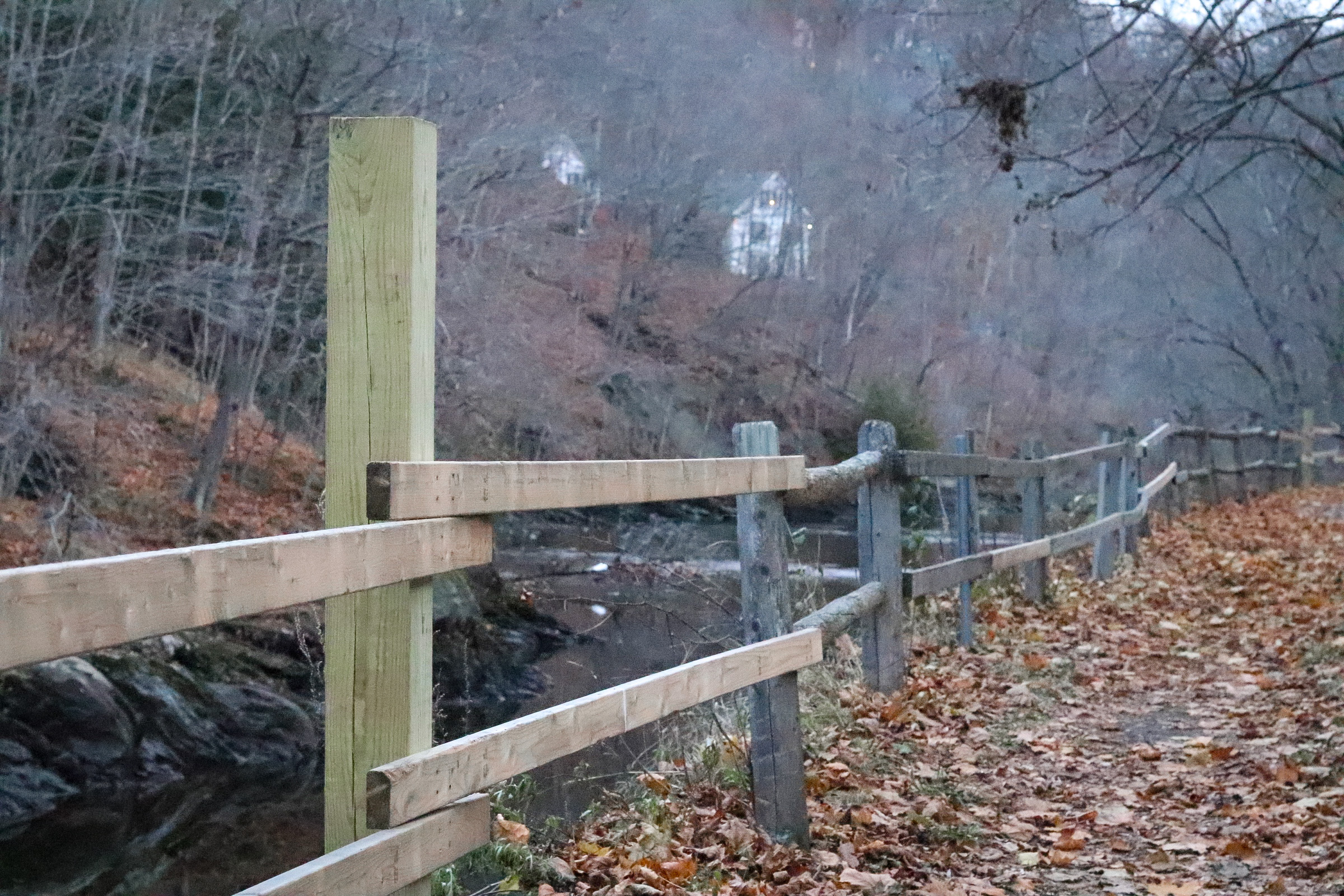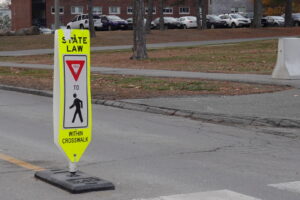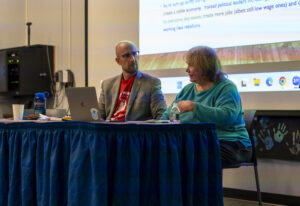The informational signs on the Kenduskeag Stream Trail in Bangor are in terrible condition, and the years of harsh Maine weather have taken their toll on the signs, scratching and cracking the plexiglass shields that are intended to protect the signs from the elements. The trail, which cuts through the middle of Bangor, had nine trail signs from a 2008 collaboration between the City of Bangor and Maine Audubon. These signs will be replaced soon.
In spring of 2024, a senior seminar class in the history department at the University of Maine began work on replacement signs. The students created signs that highlighted aspects of Bangor’s history, working with Bangor organizations such as the Zillman Art Museum, the Bangor Historical Society and the Bangor Public Library. Their signs just finished a public comment period at the Bangor Public Library.
Liam Riordan, UMaine History Department Chair and the professor who taught the seminar, talked about the results of the public comments and the next steps for the signs. This last round of public comment showed a few last technical issues such as typos, but no major changes were needed. Riordan has sent digital copies of the signs to the Bangor Parks and Recreation department for final printing and installation.
The nine new signs will be printed on metal sheets and mounted on the same concrete bases the old ones sat on. Riordan hopes that the metal construction will allow the signs to hold up against Maine weather for a long time.
This is not the first time the signs have been facing the public. Community collaboration has been a part of the project since the beginning with the signs having been presented at Bangor organization meetings and at events like Bangor’s ARTober event.
Public history is the study of history with the goal of sharing history as effectively as possible with the general public.
“Public history really at its most idealistic goal is to involve non-historians in thinking about what in the past should we remember,” said Riordan.
Jeremy Collamore, who serves as President of the UMaine History Club, also shared his thoughts on the importance of projects that involve public history.
“Public history is crucial to making history accessible and relevant to those beyond the sphere of academia, and doing so successfully reminds us of history’s importance today,” said Collamore. “Helping the general populous understand the past gives them insight into the patterns present throughout it.”
The new signs focus less on natural history, and more on Bangor’s history. The history of the Wabanaki Nations in Maine has a much larger presence in the newer signs, and the members of the Penobscot Nation provided feedback early in the design process.
One sign will be going up near the former site of the Estevan Gomez monument. Gomez was a Portuguese explorer who may have been one of the first explorers to travel up the Penobscot River. Gomez also kidnapped Native Americans and attempted to sell them into slavery in Spain. Despite him not being allowed to sell them, none of the people were returned to their homes and disappeared from the historical record.
In 2020, the monument was removed after concerns were raised by members of the Penobscot Nation. It was moved to the Bangor Historical Society where its full history could be properly contextualized. The student-made sign that will go up near the former site will speak to the history of Gomez and the memorial, and speak to the importance of listening to the stories of the Penobscot Nation.
Collamore highlighted how many opportunities there were for students to get involved in public history, including courses that Riordan teaches about the subject.
Public history has received a lot of media attention in the past few years. Since President Trump took office he issued the Executive Order 14253 ‘Restoring Truth and Sanity to American History,’ which tasks federal public history projects, such as museums and National Parks, with presenting a view of history that shows an “unmatched record of advancing liberty, prosperity, and human flourishing.”
Since this Executive order was issued there have been signs removed across the country, including in Maine’s Acadia National Park, where signs talking about climate change were removed in Sept. 2025.
Collamore took issue with the one-sided way of viewing American History presented by the Executive Order 14253.
“You can’t remove the negative sides of slavery, Native American treatment, our treatment of individuals during WW2, and much more than has been targeted by the current administration,” he said. “History can not be changed; it can’t be erased, and people must know about both sides so they may avoid its repetition.”
Collamore had visited a number of sites that made changes to their signage and believed that the historical information presented there was balanced already.
“Both sides of our history are presented at these locations, the good and the bad,” he said.









